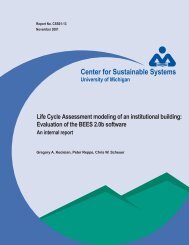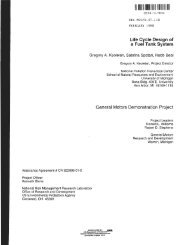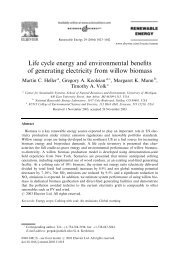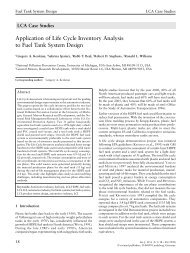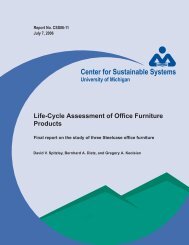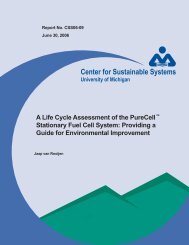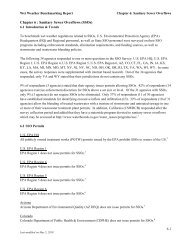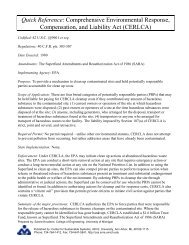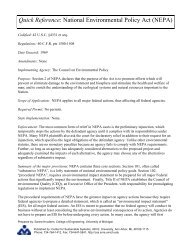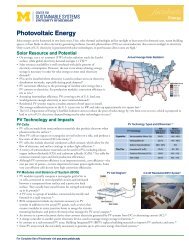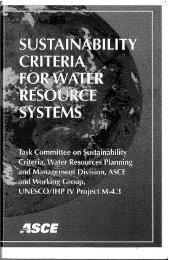Life Cycle Optimization of Residential Air Conditioner Replacement
Life Cycle Optimization of Residential Air Conditioner Replacement
Life Cycle Optimization of Residential Air Conditioner Replacement
You also want an ePaper? Increase the reach of your titles
YUMPU automatically turns print PDFs into web optimized ePapers that Google loves.
RefrigerantsAs described in Section 3.3, the leakage was assumed to decrease from 4% to 2% <strong>of</strong> refrigerantmass during the time period <strong>of</strong> the study. In addition, the refrigerant was modeled ascompletely changing over from R‐22 to R‐410a by 2010. Figure 4.2 shows the changeovermodel based on estimates from the industry (Zellmer, 2008).100%90%80%70%60%50%40%30%20%10%0%2002 2003 2004 2005 2006 2007 2008 2009 2010R‐410aR‐22Figure 4.2: Growth in R‐410a Market Share <strong>of</strong> <strong>Residential</strong> CAC Market4.3 Energy IntensityOver time the energy required to produce goods generally decreases as processes arestreamlined, waste is reduced, and new more efficient manufacturing technologies emerge. Amethod for estimating the changes in energy intensity <strong>of</strong> basic materials was utilized by Kimwhile modeling the life cycle <strong>of</strong> a mid‐sized car (2003). These values were used in this study forthe period from 1985 to 1998. Values after 1998 were updated with actual data that hasbecome available since Kim’s work. The same techniques for estimating future energyintensities were also used to extend the index to 2025. A more detailed description <strong>of</strong> thevarious data sources used and the resulting material index is given in the Appendix. Thisdecrease in the energy and GHG intensity <strong>of</strong> the raw materials used to make the CACcomponents counteracts the tendency <strong>of</strong> increasing environmental burdens due to the need tomake larger, more energy efficient components.The proportion <strong>of</strong> energy required and GHG emitted from the production <strong>of</strong> each major type <strong>of</strong>raw material and from the manufacturing <strong>of</strong> the components was found from the SimaProanalysis <strong>of</strong> the outdoor unit and indoor unit. This allowed for scaling <strong>of</strong> the energy and GHGburdens associated with the CAC components for each model year based on the changingenergy intensity <strong>of</strong> the raw materials and manufacturing in that particular year.



